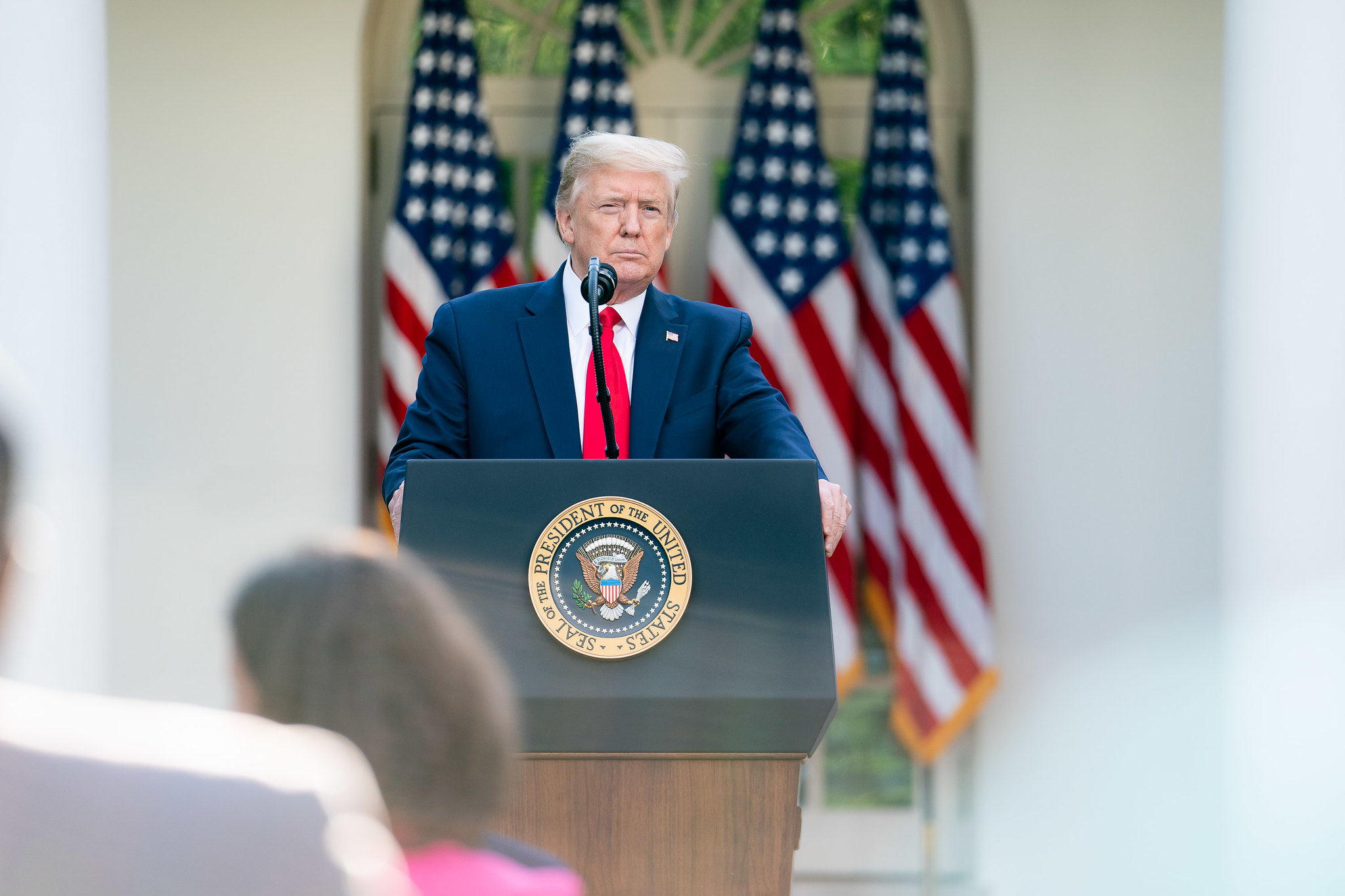
Trump and Senate Republicans Pose a Grave Risk to the Economy
The headline from last Thursday’s report by the Bureau of Economic Analysis (BEA) on second quarter GDP was horrific: The economy contracted 9.5 percent from April through June. On an annual basis, GDP fell at an astounding rate of nearly 33 percent. Still, there’s another ominous aspect to the agency’s findings that has gone largely unnoted: The pandemic-driven collapse in GDP occurred even with trillions of dollars of government aid dispensed through emergency checks to households, expanded jobless benefits, and payroll grants.
Now, as the pandemic worsens again—infections are surging across much of the South, Southwest and Midwest—we may well need to face another period of largescale shutdowns, like those that stalled out the economy in April and May. But the White House and congressional Republicans are balking at a second, comparable round of emergency assistance. The data suggest that their quibbling and stalling risks a national depression.
The BEA’s latest report on personal incomes, released the day after its latest GDP report, can give us a rough measure of what might happen if President Trump and GOP leaders block another round of federal supports at least as large as the first one.
Over the second quarter of 2020, personal income from salaries and wages fell 7.1 percent even as total personal income grew 7.3 percent. That gaping difference was bridged mainly by the emergency checks and expanded jobless benefits from the federal government.
The report also shows that personal consumption fell 10.5 percent even as the emergency checks and extended jobless benefits provided $1,420 billion in income support. That’s because people spend a lot less when unemployment sets new records. Instead, they cut out most non-essential spending and save a lot more to tide themselves for even worse times: The personal saving rate, which averaged 7.5 percent in 2019, soared to 25.7 percent in the second quarter.
Worse times may be right on the horizon if Trump and his allies continue to delay and diminish a second round of emergency assistance. We can estimate what would happen to personal incomes, consumption spending, and GDP if this second spike of infections produces shutdowns and unemployment in August and September akin to the first spike in April and May, although without the emergency aid from the government.
Personal income would fall 7.0 percent below the depressed levels in the second quarter, or more than $1,424 billion. Personal consumption, which declined at an annual rate of $1,528 billion from March through May, would be further depressed by the absence of another $1,055 billion (the $1,420 billion in emergency aid minus the 25.7 percent saved). From July through September—the months leading up to the election—Americans would spend nearly 18 percent less than they did from January through March.
That means the GDP would not begin to recover at all. The overall economy would be nearly as depressed in the third quarter as it was in the disastrous second quarter, and possibly worse. This is the fire that the Trump administration and Congress are playing with, and it could burn down a good part of the U.S. economy.
In a week or two, the White House and congressional Republicans will likely try to avoid this dire scenario—or at least the responsibility for it—by pushing a sharply pared down version of the emergency package passed more than two months ago by House Democrats. .
The version offered by GOP Senate leader Mitch McConnell would provide $1 trillion in assistance or one-third the support in the Democratic package. The GOP plan would cut the $600 expanded jobless benefit to $200, eliminate pay supplements for essential workers in hazardous jobs, and provide little aid to state and local governments. The plan does include another round of $1,200 checks for most people, with the funds paid over several months and without the additional support for children in the Democrats’ bill.
There is no economic justification for a half loaf here and the GOP’s cuts in emergency funding will exact appalling costs on millions of households. Based on all of our economic and epidemiological information, the right course for anyone not seized by love or fear of Donald Trump is to press for a new round of assistance as least as large as the measures enacted last time.
Major aid disbursements to America’s families is also the only equitable course. The crisis has already ended, kaput, for large investors—the top 10 percent of Americans who own 91 percent of all financial assets—because the Federal Reserve’s aggressive operations have virtually restored the stock and bond markets.
From February 20 to March 23, the S&P 500 tumbled almost 34 percent from its historic high of 3,372 to 2,237. Yet, as the economy has continued to tank from March 23 onward, $2.8 trillion in new Fed purchases pushed the S&P 500 back to 3,296 on August 3, just two percent from its historic high. The Fed’s operations have had the same impact on corporate bond markets, with both investment grade paper and junk bonds reversing virtually all of their recent losses even as GDP cratered.
Nevertheless, President Trump and GOP leaders have dismissed their obligation to provide large-scale support for everyone else and take the steps needed to break the pandemic. In a plummeting economy, they apparently have chosen Hebert Hoover as their role mode, another Republican president with a GOP-controlled Congress who rejected calls for wide-ranging government assistance for an economic crisis. The result was the Great Depression.
This essay appeared originally in Washington Monthly.
